Buy or gift a stand-alone digital subscription and get unlimited access to dozens of back issues for just £18.99 / $18.99 a year.
Please register at www.exacteditions.com/digital/cornucopia with your subscriber account number or contact subscriptions@cornucopia.net
Buy a digital subscription Go to the Digital EditionMartyn Rix sidesteps the concrete condos of the Turkish Riviera to go searching for native flowers. In the valleys of the Taurus Mountains and on the unspoilt rocky headlands of the coast, he finds wild gladioli, tassel hyacinths, Persian fritillaries
East of Antalya the Taurus Mountains follow the bulge of the Mediterranean coastline, rising up from a narrowing plain to form bare limestone ridges which reach their highest point on the Bolkar Mountains near Pozantı. The mountains themselves are almost uninhabited because of lack of water, and to their north lies the great salt plain of southern Konya. Only the valleys are populated, and they are separated from one another by steep and impassable ridges.
A visit in April 2001 gave me the chance to explore these valleys and to search for fritillaries and other spring-flowering bulbs, as well as to introduce my wife and daughters to the archaeological sites along the coast, which I had first seen in 1969.
This area has long been known to be very rich in wild flowers, both in quantity and in the number of rarities that are found in only one or two of the valleys – so-called endemics. In an article in the Journal of the Royal Horticultural Society entitled ‘The Spring Flora of the Turkish Riviera’, Peter Davis, a friend and mentor to all Turkish botanists, described a journey he made in 1956 with Oleg Polunin. It is a measure of the longevity of plants that I am still growing two of the bulbs – a snowdrop and a fritillary – collected by Peter Davis on that visit and passed on to me via the Cambridge University Botanic Garden in the 1960s. I have given away many of their offspring over the years.
We saw some of the places Davis and Polunin had visited, and found many of the same species. They had travelled by Land Rover, but even so found many of the main roads impassable because of snow or mud. Today, the development of holiday apartments has ruined many of the flatter parts of this coast, but a beneficial side effect is greatly improved roads, which enabled us to travel everywhere in a small hire car. As soon as the coast is left behind, the country is totally unspoilt and the villages are thriving, with new houses built as summer lodges for those who have made money from tourism.
The second major development along the coast has been the growing of early vegetables, strawberries (already ripe in mid-April), and bananas (end-of-season ucuz muz – cheap bananas) under glass and polythene, to take advantage of the warm and sheltered climate of the coastal plains. These were formerly grown in the open, but cheap greenhouses have extended the season.
As we arrived from a freezing London via a cold, wet Istanbul, the balmy air of Antalya was sweet with orange and lemon blossom. We were welcomed at the Sheraton Voyager Hotel [now Rixos Downtown], whose view along the curving beach to the south, backed by the snowy peaks of Tahtalı Dağı, is one of the most stunning of any hotel in the world. Its breakfasts were scarcely less superb.
Our plan was to drive east as fast as possible, then linger over the return journey, as we thought the season might be further advanced in the Adana area. So our first stop was east of Alanya. The coast here is wild and rocky, with little cultivation and mountains covered with dry pine forest. A short diversion up the valley beyond Demirtaş revealed deep gorges and clear streams overhung with the cut-leaved oriental plane tree, Platanus orientalis, and a rare species of alder, Alnus orientalis, which is found only in southern Turkey, Cyprus and Lebanon. With the sun shining through their young leaves, both these trees were a startling bright green.
There are few settlements along the coast east of Alanya until the town of Anamur, but some of the roadside cornfields were bright with pink Gladiolus italicus&, yellow corn marigolds and the tall purple tassel hyacinths, *Muscari comosum, whose edible bulbs are mentioned by Theophrastus and illustrated in the herbal of Dioscorides. The plate of Muscari in the Codex Vindobonensis is annotated both in Greek and Arabic script, and the bulbs are still dug for sale in village markets today.
Just outside Anamur are the remains of Anemurium, a well-preserved Phoenician, Roman and later Byzantine city, finally sacked by the Arabs in the seventh century. We were captured by a charming French-speaking guide who took us round at great speed, along tottering walls and through tunnels crawling with speckled snakes, and showed us where to brush back the sand and pebbles to reveal mosaics of Chukor partridges and fish. As at many Turkish ruins, the lack of grazing produces a rich cover of annual peas, vetches and clovers, and the walls have been colonised by cliff plants. At Anamurium the golden henbane, Hyoscyamus aureus, hung down in clammy clumps, and Michauxia campanuloides emerged from between the stones. This striking plant has a tall, bristly stem and large white or pale mauve flowers with reflexed petals like a large cyclamen. As the second name suggests, it is a relation of Campanula. The first name commemorates André Michaux, who in 1761 accompanied the Danish botanist Peter Forskal on an expedition to Egypt and southern Arabia, returning via Syria.
André Michaux (1746–1802) and his son François-André went on to become pioneers of the botanical exploration of North America and, after returning to Paris, produced accounts of their finds, illustrated with the most elegant engravings by the Redouté brothers. Our guide surprised us by snapping off the young Michauxia stems, peeling them and eating them. They are crisp and juicy but have little flavour. Storax, Styrax officinalis, yields a valuable gum that was formerly used both medicinally and as incense. It was in full flower – a pretty shrub with rounded leaves and pure white flowers. Styrax is one of those ancient woody plants like Liquidambar which just survived the Ice Age in southern Turkey, but are now much more common in China and in North America.
Anemurium is a wonderful place to spend a relaxing afternoon, perfect for a swim, with deep, clear water and a restaurant serving a delicious long, slender fish with long, pointed jaws. Perhaps the mosaics had decorated the floor of such a restaurant.
Above Anamur the hills were again covered with pines. The loveliest plant was a borage which made huge cushions on shady rocks along the road. This is Onosma albo-roseum, whose flowers change colour from white to pink and finally purple. There are over eighty-eight species of Onosma in Turkey, mostly growing out of crevices in limestone rocks or on rocky screes, and this is one of the most showy. Other species usually have yellow flowers, or more rarely red or blue.
Anamur has the distinction of being the most southerly part of Anatolia, and just east of the town the beautiful Mamure Castle stands out into the sea, with fine crenellated walls and towers. We continued eastwards, intending to follow in Davis and Polunin’s footsteps and investigate the flora around Gülnar, a village in the hills above Aydıncık. Here they collected some unusual forms of Fritillaria elwesii, which the English hunter, traveller and botanist HJElwes, of Colesbourne in Gloucestershire, collected near Muğla in 1874. We were lucky to find some among scrubby oak trees and, growing nearby, the pink Daphne sericea, a common shrub on limestone in southern Turkey.
But our most exciting find here was a small graveyard by the wayside filled with hundreds of Fritillaria persica in full flower, a tall, black-flowered form close to the garden variety called adiyaman, which presumably originated near the town of that name much further east. Hundreds of stems around five feet tall were growing with yellow Asphodel, Asphodeline lutea. This is the westernmost area in which this fritillary has been seen, but it grows as far east as the Zagros Mountains in Iran, and in a slightly different form as far south as Petra in Jordan. It is not only to be found in this graveyard, as we saw it in several other places in the same area, though never in such beauty or profusion. Was it originally brought here from the east and planted in some Ottoman garden? We can never know. We do know, however, that it was grown in Istanbul in the mid-sixteenth century, and from there was taken with other bulbs to Holland.
Another beautiful and rare plant in this area is Alkanna aucherana, whose silver leaves and blue flowers – like large forget-me-nots – hang down from crevices in the rock. It is a relative of the Dyer’s Alkanet, Alkanna tinctoria, which makes a good crimson-red dye used in Turkish carpets and kilims, along with madder, Rubia tinctorum, which is close to the much commoner Lady’s Bedstraw, Galium verum.
There were in antiquity, and still are, only two easy ways to cross from inner Anatolia to the Mediterranean sea: the rocky defile of the Cilician Gates, which leads to Tarsus, and the valley of the Göksu river, the ancient Calycadnus, which reaches the sea at Silifke. We drove up this dangerous river, flowing deep and cold through a gorge near the sea, then through a wide valley with bare chalky hills, more reminiscent of central Anatolia than the Mediterranean coast. In 1189 Frederick Barbarossa, leading the Third Crusade, drowned while swimming in the river. And, by coincidence, Alexander, having passed unopposed through the Cilician Gates, nearly died of fever after swimming in the Cydnus at Tarsus, now the Pamuk Deresi and used for irrigating cotton. The chalky roadsides had interesting annuals such as Adonis annua and the blue Asperula orientalis, as well as the large, thistly Gundelia tournefortii. This was recorded in the visit to Turkey in 1700 of Joseph Pitton de Tournefort, Professor of Botany at the Jardin du Roi in Paris, with his friend Dr Andreas Gundelsheim and the painter Claude Aubriet. They travelled in the retinue of a pasha and his family from Istanbul to Trabzon by boat, then across the mountains via Bayburt to Erzurum and as far as Mount Ararat. They were greatly impressed by this plant, with its succulent young shoots. It is still a delicacy for shepherds in eastern Anatolia, where it is very common.
On a mountain ridge above the Göksu river are the ruins of Alahan, with its splendid arched basilica and well-preserved carvings. One of the most spectacular flowers here was a species of Alexanders, Smyrnium connatum, a beautiful celery-like pot-herb with shining dark-green leaves which become progressively yellower up the stem.
Returning along the coast, we visited Side, now a well-developed tourist resort but still a wonderful site, with its ruins emerging out of sand blown in from the beach, and convenient for a morning’s visit before catching the plane. In early spring the sandy turf is sprinkled with blood-red anemones, and wild pink oleanders flourish in damp hollows.
We were driven into a pide restaurant by the rain. “Where are you from?” “From England.” “Ah. I have a girlfriend in England, from Manchester, called Sharon.” Back at Istanbul airport the girls bump into a mobile robot outside the Lindt chocolate store. “Where are you from?”“From England.” “Ah. I have girlfriend in England, from Manchester…”
Martyn Rix is the editor of Curtis’s Botanical Magazine, published since 1790.
SPECIAL OFFER: order five beautiful garden-themed issues, including this one, for only £80. List price £122
Red peppers, chillies, maize and sunflowers set the Mediterranean ablaze with their pungent flavours and fiery colours. But of all the Aztecs’ gifts, it is the tomato, above all, that tastes of the sun
The Ottomans were not only passionate about flowers. They turned the enjoyment of gardens into an art form. John Carswell leafs through a lavish volume which unlocks the gate to the pleasure grounds of Istanbul’s imperial palaces.
SPECIAL OFFER: order three beautiful garden-themed issues, including this one, for only £60. List price £102
Sold in 2003 for record prices, these magical daguerrotype plates of Istanbul in the 1840s are the earliest known photographic images of the city. They are the work of Joseph-Philibert Girault de Prangey, an obsessive Frenchman with a passion for Islamic architecture. By Elizabeth Meath Baker.
In the closing years of the nineteenth century, the Aegean coast of Turkey witnessed three of the greatest archaeological finds of all time. The discovery of Ephesus and Troy made international headlines overnight. But the third – an unassuming stone house in an isolated forest – was immediately enveloped in secrecy. By Donald Carroll
Under the Ottomans, Kirkuk’s ancient citadel was the heart of a thriving cosmopolitan city. But politics and oil have reduced it to a deserted ruin. Owen Matthews, who has been covering northern Iraq for several years, visited Kirkuk at the end of the recent war. Photographs by Ashley Gilbertson
Dipping into a Mediterranean idyll, Stephen and Nina Solarz have built a haven high above the harbour of Kalkan. Andrew Finkel paid them a visit. Photographs by James Mortimer
A small and perfectly formed exhibition of Iznik pottery held in Qatar has given birth to a fittingly exquisite catalogue
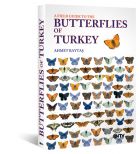
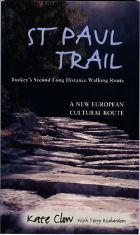
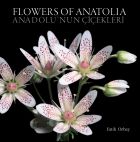
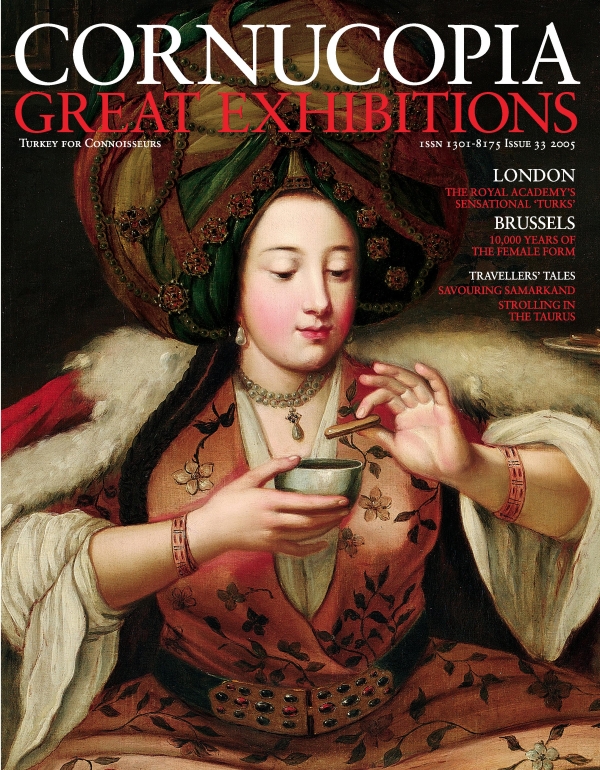
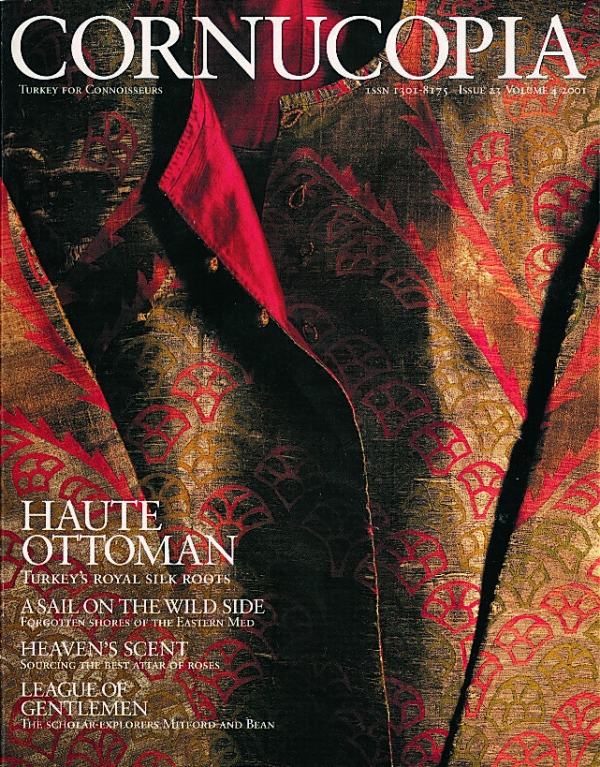

Cornucopia works in partnership with the digital publishing platform Exact Editions to offer individual and institutional subscribers unlimited access to a searchable archive of fascinating back issues and every newly published issue. The digital edition of Cornucopia is available cross-platform on web, iOS and Android and offers a comprehensive search function, allowing the title’s cultural content to be delved into at the touch of a button.
Digital Subscription: £18.99 / $18.99 (1 year)
Subscribe now